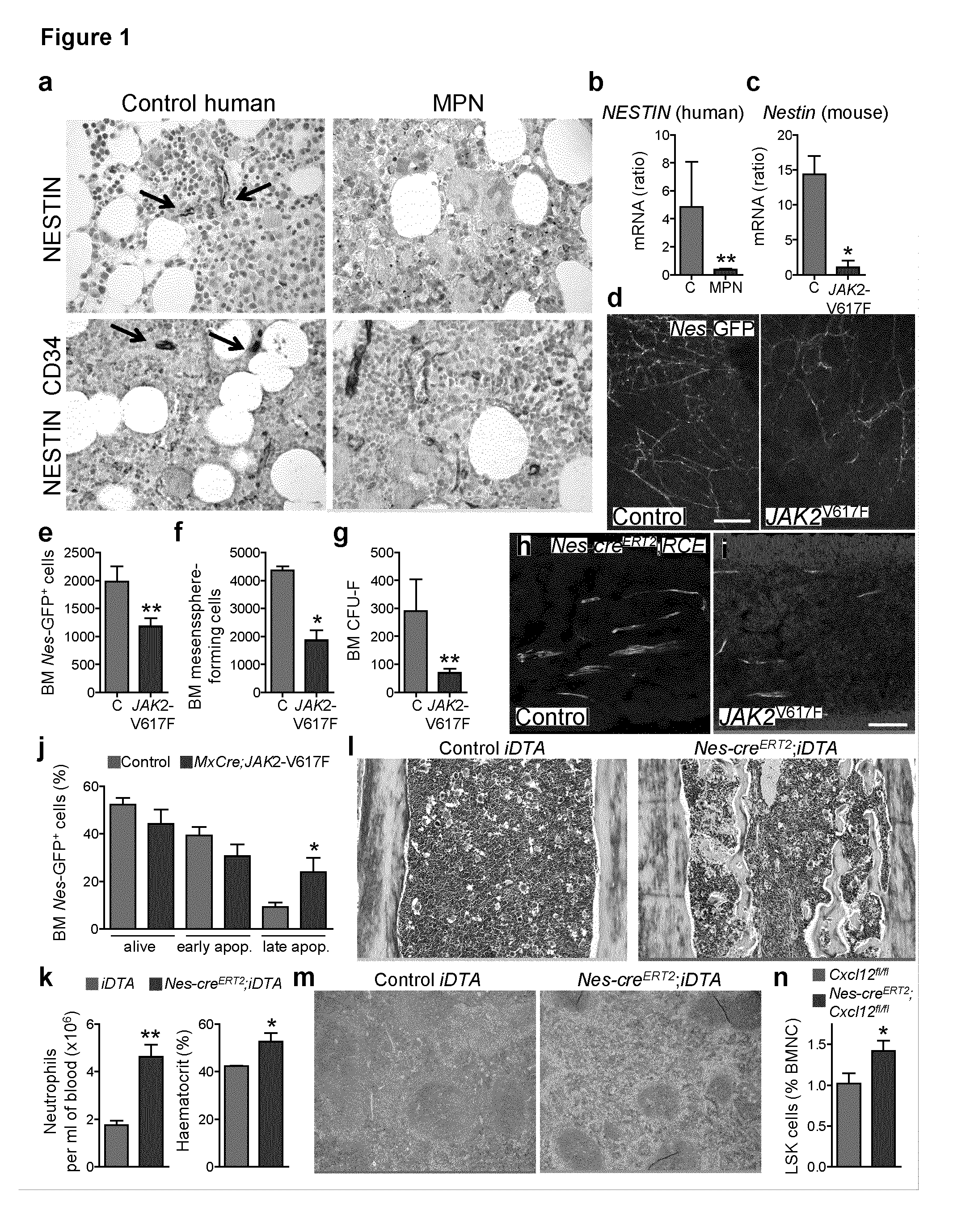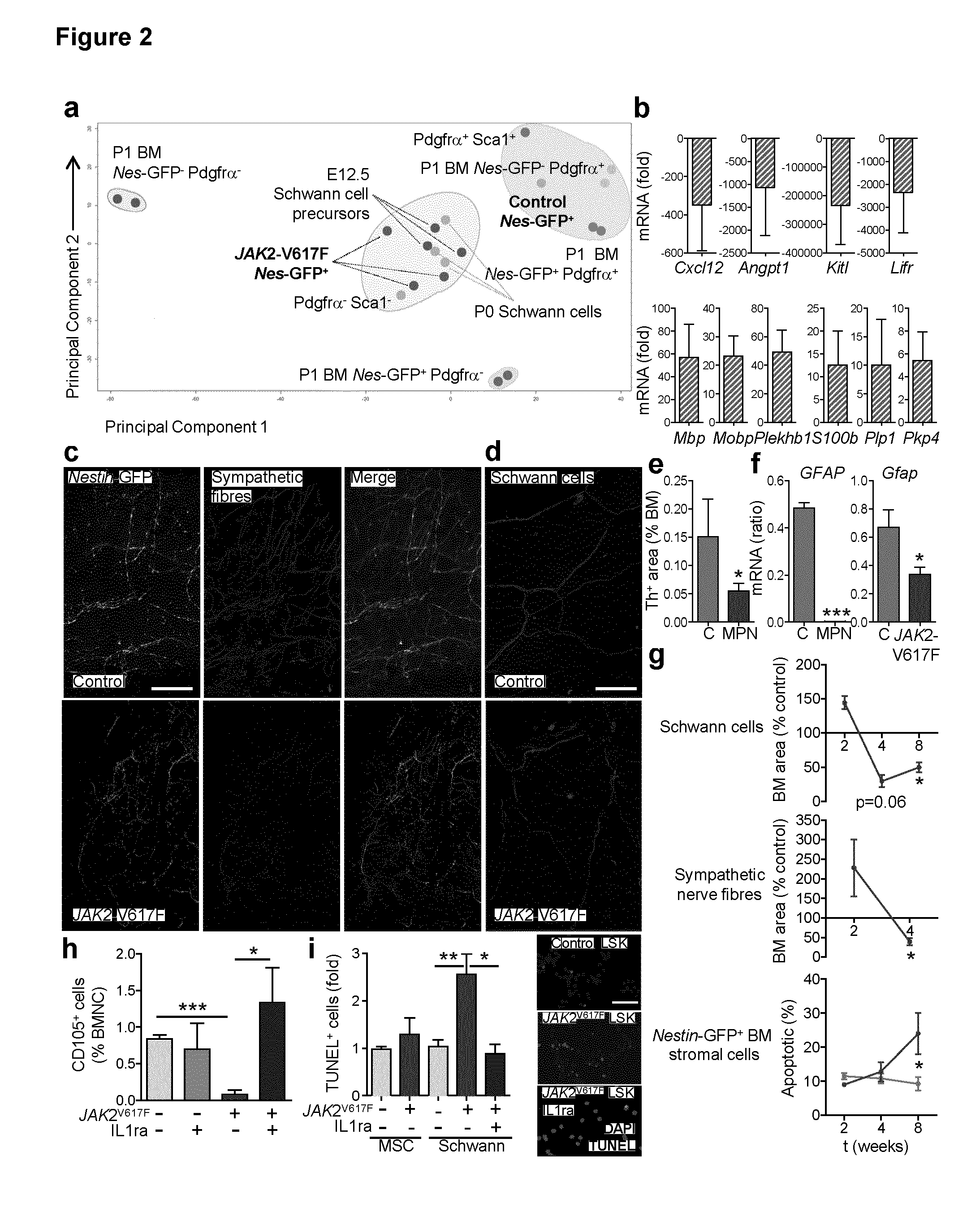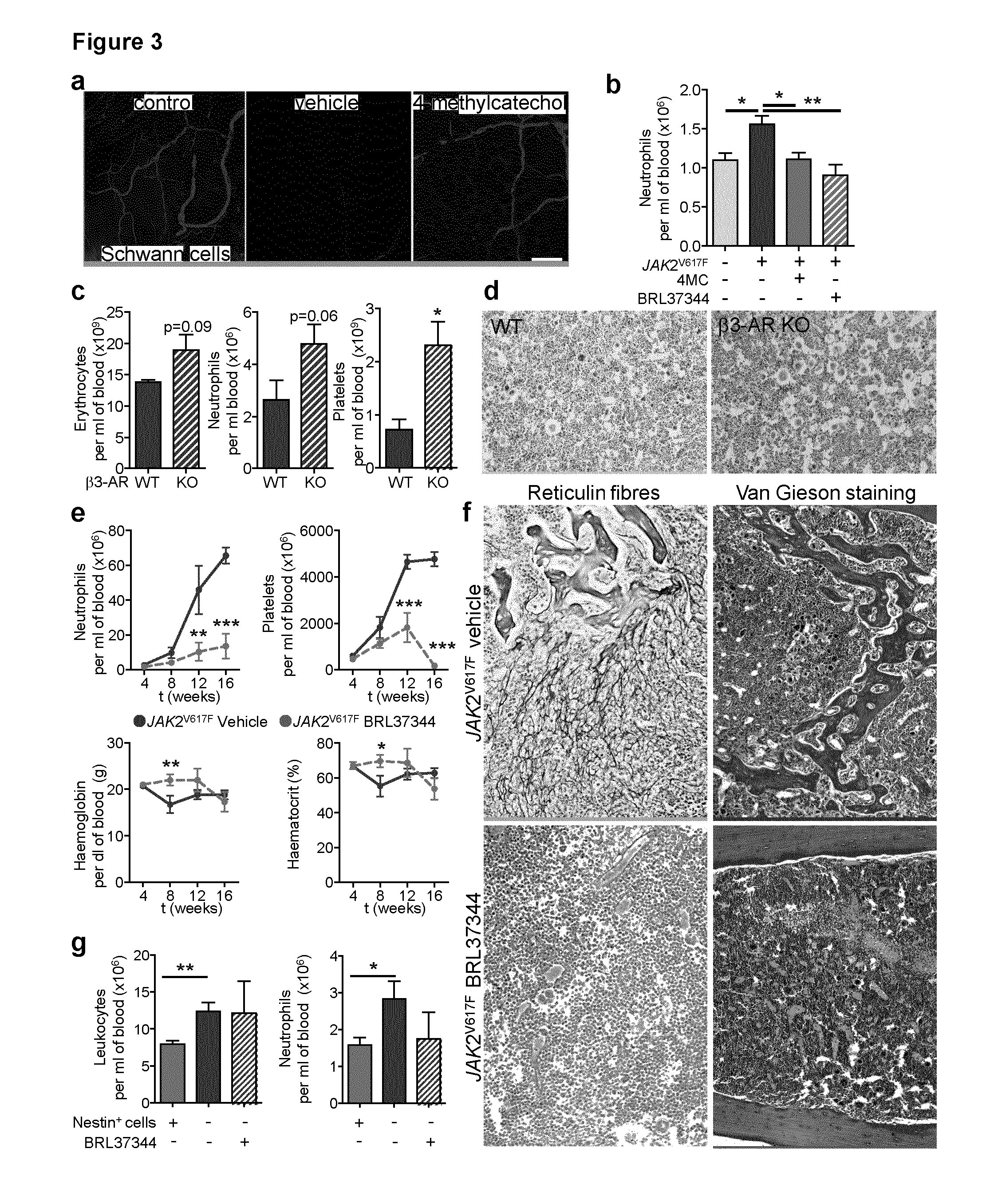Compounds suitable for the treatment of myeloproliferative neoplasms as well as methods for the diagnosis/prognosis of myeloproliferative neoplasms
a technology for myeloproliferative neoplasms and compounds, applied in the field of medical devices, can solve the problems of slow development of diseases, abnormally high number of blood cells, and complications, and achieve the effects of improving the survival rate of patients, improving the survival rate, and improving the survival ra
- Summary
- Abstract
- Description
- Claims
- Application Information
AI Technical Summary
Benefits of technology
Problems solved by technology
Method used
Image
Examples
example 1
Materials and Methods for FIGS. 1-13
1.1. Human Study
[0202]The study was approved by institutional review boards. Written informed consent was obtained from all patients in accordance with the Declaration of Helsinki. The diagnosis of MPN was established according to the revised criteria of the World Health Organization.
1.2. In Vivo Pharmacological Treatments
[0203]In Mx1-cre; JAK2-V617F double-transgenic mice, expression of the human JAK2-V617F mutation is driven by the endogenous Jak2 promoter and can be conditionally expressed in haematopoietic cells upon Myxovirus resistance-1 (Mx1)-driven Cre recombinase activation by polyinosine-polycytosine (plpC). PlpC-induced transgenic mice and wild-type mice transplanted with BM cells from these mice develop progressive symptoms of PV19,20. Age-matched, female wild-type C57BL / 6J or Nes-gfp mice were used as recipients in bone marrow (BM) transplantation assays and for in vivo pharmacological treatments. Lethally irradiated (12 Gy) recipient...
example 2
Fetal BM Nestin+ Cells are Quiescent and Distinct from Osteochondral Cells
[0223]We have shown previously that, in the adult murine BM, stromal cells expressing the green fluorescent protein (GFP) under the regulatory elements of nestin promoter (Nes-GFP+) displayed both HSC− niche and MSC features (Mendez-Ferrer et al., 2010). We first characterized Nes-GFP+ cells during limb BM development. At E18.5 Nes-GFP+ cells were frequently associated with arterioles and sprouting endothelial cells within the osteochondral junction (FIG. 14a-c). Fetal BM Nes-GFP+ cells were heterogeneous and comprised not only a majority of BMSCs, but also a small subset of CD31+ putative endothelial cells that increased during the postnatal period (FIGS. 14d-e). Compared with Nes-GFP+ BMSCs, the Nes-GFP+ cell population was enriched in endogenous Nestin mRNA expression (FIG. 14f). By fluorescent microscopy, arterioles appeared brighter for GFP because they contained several concentric GFP+ cells, including a...
example 3
BM Nestin+ Cells do not Contribute to Fetal Endochondrogenesis
[0224]Axial and appendicular skeleton is thought to originate solely from mesoderm. During endochondral ossification, cartilage composed by chondrocytes is progressively replaced by osteoblast precursors that express the transcription factor osterix and infiltrate the perichondrium associated with invading blood vessels (Maes et al., 2010). We performed lineage-tracing studies by crossing RCE reporter mice (Sousa et al., 2009) with mice expressing inducible Cre recombinase under the regulatory elements of Hoxb6 gene, which is expressed in lateral plate mesoderm (Nguyen et al., 2009). The resulting double-transgenic mice were administered tamoxifen at E10.5 and embryos were analyzed for osterix expression at E18.5. Unlike cells derived from lateral plate mesoderm, fetal limb BM Nes-GFP+ cells did not express osterix protein (FIG. 15a-b) and thus could not be considered osteoblast precursors.
[0225]We next performed genetic ...
PUM
| Property | Measurement | Unit |
|---|---|---|
| Fraction | aaaaa | aaaaa |
| Current | aaaaa | aaaaa |
| Current | aaaaa | aaaaa |
Abstract
Description
Claims
Application Information
 Login to View More
Login to View More - R&D
- Intellectual Property
- Life Sciences
- Materials
- Tech Scout
- Unparalleled Data Quality
- Higher Quality Content
- 60% Fewer Hallucinations
Browse by: Latest US Patents, China's latest patents, Technical Efficacy Thesaurus, Application Domain, Technology Topic, Popular Technical Reports.
© 2025 PatSnap. All rights reserved.Legal|Privacy policy|Modern Slavery Act Transparency Statement|Sitemap|About US| Contact US: help@patsnap.com



